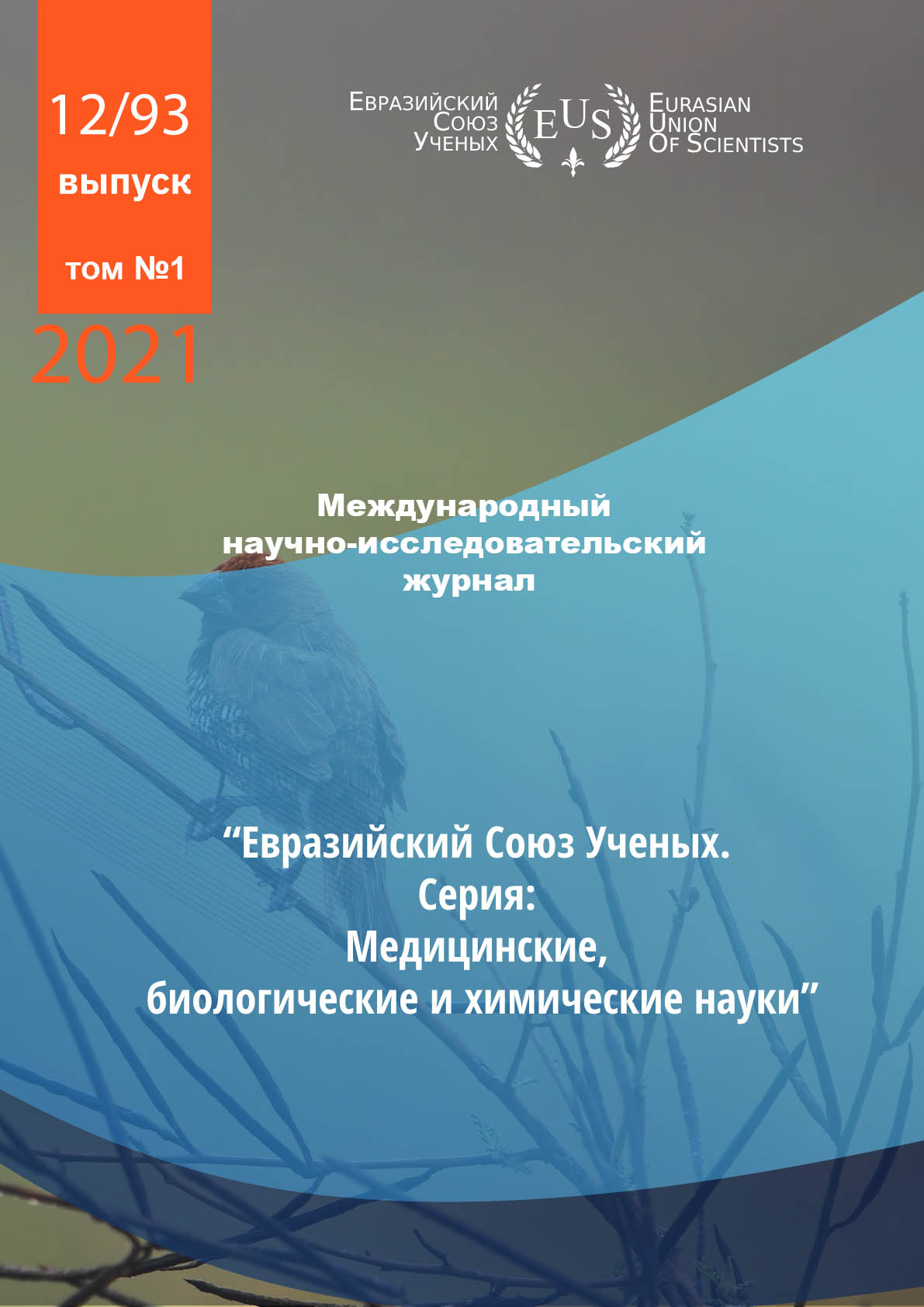СИМУЛЯЦИОННОЕ ОБУЧЕНИЕ ПЕРСОНАЛА ИНСУЛЬТНЫХ ОТДЕЛЕНИЙ – КАТАЛИЗАТОР КАЧЕСТВА СПЕЦИАЛИЗИРОВАННОЙ МЕДИЦИНСКОЙ ПОМОЩИ ПАЦИЕНТАМ С ОСТРЫМ НАРУШЕНИЕМ МОЗГОВОГО КРОВООБРАЩЕНИЯ.
Аннотация
В статье рассмотрена технология разработки и опыт внедрения курса симуляционного обучения оказанию экстренной медицинской помощи при инсульте. Положительный эффект симуляционного обучения при оказании неотложной помощи при ОНМК был доказан значительными повышением доступности современных лечебных программ для пациентов, улучшением тактики ведения пациентов в клинической практике стационаров, экономией времени для логистики и принятия решений, усилением командной работы, более уверенным владением алгоритмов выбора лечебной тактики. Рекомендовано широкое использование образовательной технологии симуляционного обучения с целью быстрого приобретения персоналом ключевых клинических компетенций, реализации командной работы на основе профессиональной подготовки и эффективности, формирование командного взаимодействия; имплементации единого подхода на всей территории региона (мегаполиса) к исполнению стандартов и алгоритмов оказания экстренной медицинской помощи.
Литература
2.Emberson J, Lees KR, Lyden P, et al.. Effect of treatment delay, age, and stroke severity on the effects of intravenous thrombolysis with alteplase for acute ischaemic stroke: A Meta-analysis of individual patient data from randomised trials. Lancet 2014; 384: 1929– 1935. doi: 10.1016/S0140-6736(14)60584-5.
3.Mundell WC, Kennedy CC, Szostek JH, et al.. Simulation technology for resuscitation training: a systematic review and meta-analysis. Resuscitation. sept 2013; 84: 1174–1183. Theilen U, Fraser L, Jones P, et al.. Regular in-situ simulation training of paediatric medical emergency team leads to sustained improvements in hospital response to deteriorating patients, improved outcomes in intensive care and financial savings. Resuscitation 2017; 115: 61–67. doi: 10.1016/j.resuscitation.2013.04.016.
4.Ajmi SC, Advani R, Fjetland L, et al.. Reducing door-to-needle times in stroke thrombolysis to 13 min through protocol revision and simulation training: a quality improvement project in a Norwegian stroke centre. BMJ Qual Saf 2019; 28: 939–948. doi: 10.1136/bmjqs-2018-009117.
5. Braksick SA, Kashani K, Hocker S. Neurology education for critical care fellows using high-fidelity simulation. Neurocrit Care 2017; 26: 96–102. doi: 10.1007/s12028-016-0293-3.
6.Richard S, Mione G, Varoqui C, et al.. Simulation training for emergency teams to manage acute ischemic stroke by telemedicine. Medicine (Baltimore) 2016; 95:e3924. doi: 10.1097/MD.0000000000003924.
7.Barbara Casolla et al. Simulation training programs for acute stroke care: Objectives and standards of methodology. Eur Stroke J. 2020 Dec; 5(4): 328–335. doi: 10.1177/2396987320971105.
8.Murphy M, Curtis K, McCloughen A. What is the impact of multidisciplinary team simulation training on team performance and efficiency of patient care? An integrative review. Australas Emerg Nurs J 2016; 19: 44–53. doi: 10.1016/j.aenj.2015.10.001.
9.Angelo RL, Ryu RKN, Pedowitz RA, et al.. A proficiency-based progression training curriculum coupled with a model simulator results in the acquisition of a superior arthroscopic Bankart skill set. Arthroscopy 2015; 31: 1854–1871. doi: 10.1016/j.arthro.2015.07.001.
10.Rossijskaja gazeta - Specvypusk № 0(6066) ot 25 aprelja 2013 g. https://rg.ru/gazeta/rg/2013/04/25.html
11. European Stroke Organisation. Guidelines for management of ischaemic stroke and transient ischaemic attack. Cerebrovasc Dis 2008; 25: 457–507. doi: 10.1159/000131083.
12. Reperfuzionnaja terapija ishemicheskogo insul'ta. Klinicheskij protokol. – M., 2019. – 80 s. ISBN 978-5-00030-722-9
13. Guidelines for the Early Management of Patients With Acute Ischemic Stroke: 2019 Update to the 2018 Guidelines for the Early Management of Acute Ischemic Stroke: A Guideline for Healthcare Professionals From the American Heart
Association/American Stroke Association William J. Powers, Alejandro A. Rabinstein, Teri Ackerson, Opeolu M. Adeoye, Nicholas C. Bambakidis, Kyra Becker, José Biller, Michael Brown, Bart M. Demaerschalk, Brian Hoh, Edward C. Jauch, Chelsea
S. Kidwell, Thabele M. Leslie-Mazwi, Bruce Ovbiagele, Phillip A. Scott, Kevin N. Sheth, Andrew M. Southerland, Deborah V. Summers, David L. Tirschwell, Stroke. 2019;50:e344–e418] i ESO [Berge E, Whiteley W, Audebert H, De Marchis GM, Fonseca AC, Padiglioni C, de la Ossa NP, Strbian D, Tsivgoulis G, Turc G. European Stroke Organisation (ESO) guidelines on intravenous thrombolysis for acute ischaemic stroke. Eur Stroke J. 2021 Mar;6(1):I-LXII. doi: 10.1161/STR.0000000000000211.
14. Petrosoniak A, Auerbach M, Wong AH, et al.. In situ simulation in emergency medicine: moving beyond the simulation lab. Emerg Med Australas 2017; 29: 83–88. doi: 10.1111/1742-6723.12705.
15.Rosen MA, Hunt EA, Pronovost PJ, et al.. In situ simulation in continuing education for the health care professions: a systematic review. J Contin Educ Health Prof 2012; 32: 243–254. doi: 10.1002/chp.21152.
16. Spurr J, Gatward J, Joshi N, et al.. Top 10 (+1) tips to get started with in situ simulation in emergency and critical care departments. Emerg Med J 2016; 33: 514–516. doi: 10.1136/emermed-2015-204845.
17. Steinemann S, Berg B, Skinner A, et al.. In situ, multidisciplinary, simulation-based teamwork training improves early trauma care. J Surg Educ 2011; 68: 472– 477. doi: 10.1016/j.jsurg.2011.05.009.
18. Sørensen JL, van der Vleuten C, Rosthøj S, et al.. Simulation-based multiprofessional obstetric anaesthesia training conducted in situ versus off-site leads to similar individual and team outcomes: a randomised educational trial. BMJ Open 2015; 5: e008344. doi: 10.1136/bmjopen-2015-008344.
19. Lois FJ, Pospiech AL, V, Dyck MJ, et al.. Is the « in situ » simulation for teaching anesthesia residents a lower cost, feasible and satisfying alternative to simulation center ? A 24 months prospective observational study in a university hospital. Acta Anaesthesiol Belg 2014; 65: 61–71 PMID: 25223165.
20. Kirkpatrick DL, Kirkpatrick JD. Evaluating training programs: the four levels. San Francisco: Berrett-Koehler, 2006.
21. Lavine SD, Cockroft K, Hoh B, et al.. Training guidelines for endovascular ischemic stroke intervention: an international multi-society consensus document. AJNR Am J Neuroradiol 2016; 37: E31–34. doi: 10.3174/ajnr.A4766.
22. Day AL, Siddiqui AH, Meyers PM, et al.. Training standards in neuroendovascular surgery: program accreditation and practitioner certification. Stroke 2017; 48: 2318–2325. doi: 10.1161/STROKEAHA.117.016560.
23. Asch DA, Weinstein DF. Innovation in medical education. N Engl J Med 2014; 371: 794–795. doi: 10.1056/NEJMp1407463.
CC BY-ND
Эта лицензия позволяет свободно распространять произведение, как на коммерческой, так некоммерческой основе, при этом работа должна оставаться неизменной и обязательно должно указываться авторство.







